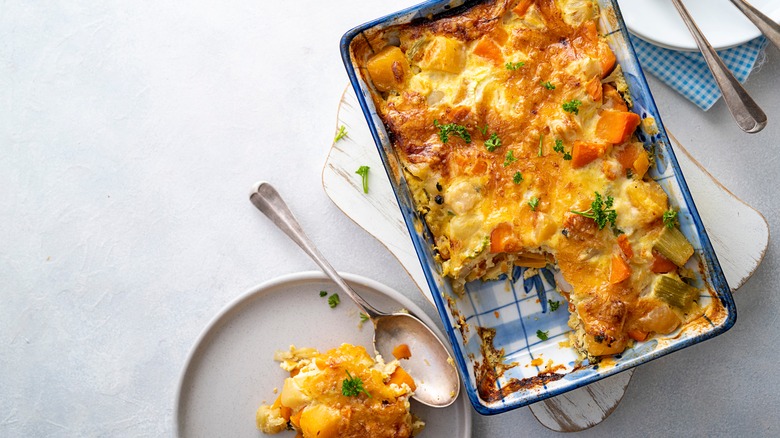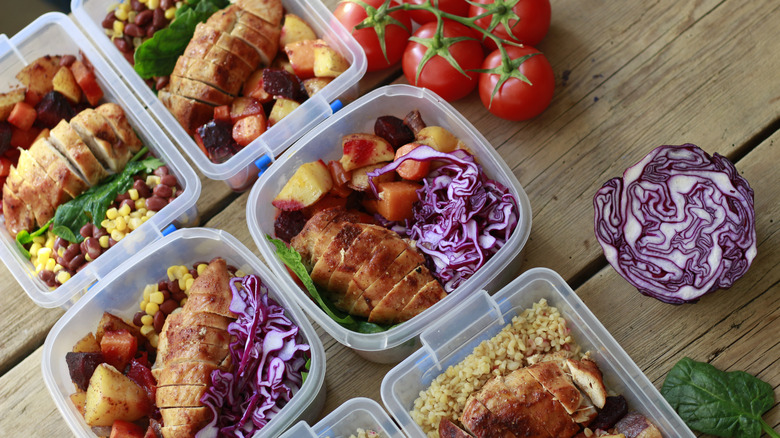Why You Should Never Let Food Completely Cool Before Storing It
Whether you're meal-prepping or you have leftovers from a large meal, you'll likely be storing this food in the refrigerator or the freezer. In order to keep food safe for consumption, it's important to lay down some ground rules.
Firstly, you'll want to make sure you store your food in appropriate containers. When storing produce, veggies like cucumbers and leafy greens should be wrapped in paper towels, then placed in unsealed plastic bags so excess moisture can escape. Or, as Martha Stewart recommends, you might consider using storage containers that can be neatly stacked on fridge or freezer shelves to keep everything tidy.
Another thing to keep in mind is the shelf-life of the foods you're storing. You should always label and date items, and if you're unsure how long you can keep leftovers, organizations like StateFoodSafety have helpful guides.
However, before you even get around to storing your food in the fridge or freezer, you might set it aside for a bit. After all, if you put a still-hot casserole in the fridge, all that moisture is going to collect inside the container and leave your food soggy. That being said, you shouldn't let the casserole cool completely either.
Why you shouldn't let leftovers reach room temperature
Although it seems reasonable to let leftovers from dinner cool completely before you put them in the fridge or freezer, this could prove to be dangerous several days down the road. But how does temperature make a difference?
According to Food Network, if you were to leave a casserole out for a couple of hours while it cools, these couple of hours are enough time for bacteria to start growing. In fact, bacteria grow most quickly in temperatures between 40 and 140 degrees Fahrenheit, per the U.S. Department of Agriculture. Needless to say, consuming bacteria-ridden food can cause serious illness.
So how can we avoid food poisoning while also avoiding moisture build-up? You can still allow food to sit on the counter while it cools, but never for longer than an hour or two. In other words, you can let the food cool a little, but be sure to refrigerate or freeze it before it reaches room temperature.

